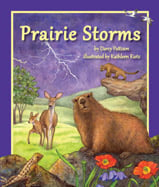Alignment to Standards for NH

| Grade | Number | Standard |
|---|---|---|
| 2 | S:ESS1:2:1.1 | weather conditions change frequently, and that weather patterns change over the seasons. |
| 2 | S:ESS4:2:3.2 | Identify environments that are natural, such as a forest, meadow, or mountains and those that have been built or modified by people, including cities, roads, farms, and houses. |
| 2 | S:LS1:2:1.2 | plants and animals as living things and describe how they are alike and different. |
| 2 | S:LS1:2:2.1 | plants and animals have features that help them survive in different environments. |
| 2 | S:LS2:2:1.1 | living things can be found almost anyplace in the world; and that specific types of environments are required to support the many different species of plant and animal life. |
| 2 | S:LS2:2:1.3 | Recognize that some plants and animals go through changes in appearance when the seasons change. |
| 2 | S:LS2:2:2.1 | Identify the resources plants and animals need for growth and energy, and describe how their habitat provides these basic needs. |
| 2 | S:LS3:2:3.1 | similarities and differences in both behavior and appearance of plants and animals. |
| 2 | S:LS3:2:3.2 | there are different species of living things in various places around the world. |
| 2 | S:SPS1:2:4.2 | Identify and describe patterns and relationships in observed objects and events. |
| 2 | SS:GE:2:3.1 | Earth-Sun relationship affects our daily lives, e.g., seasons in New Hampshire or sunlight and shadows. |
| 2 | SS:GE:2:3.2 | components and distribution of ecosystems, e.g., desert or rain forest. |
| 4 | S:LS1:4:2.1 | living organisms have certain structures and systems that perform specific functions, facilitating survival, growth and reproduction. |
| 4 | S:LS1:4:2.3 | physical structures of an organism (plants or animals) allow it to survive in its habitat/environment |
| 4 | S:LS1:4:3.1 | plant and animal characteristics that are inherited, such as eye color in humans and the shape of leaves in plants, and those that are affected by their environment, such as grass turning brown due to lack of water. |
| 4 | S:LS2:4:1.1 | Describe how the nature of an organismês environment, such as the availability of a food source, the quantity and variety of other species present, and the physical characteristics of the environment affect the organismês patterns of behavior. |
| 4 | S:LS2:4:3.1 | plants and animals interact with one another in various ways besides providing food, such as seed dispersal or pollination. |
| 4 | S:LS2:4:3.2 | Describe ways plants and animals depend on each other (e.g., shelter, nesting, food). |
| 4 | S:LS3:4:3.2 | for any particular environment, some kinds of animals and plants survive well, some less well, and some cannot survive at all. |
| 4 | S:SPS3:4:2.6 | Organize information to search for relationships and patterns concerning the environment and environmental topics. |
| 4 | SS:GE:4:2.3 | Generalize the concept of region as an area of Earth's surface with unifying geographic characteristics, e.g., neighborhoods or climate regions. |
| 4 | SS:GE:4:3.2 | Demonstrate how physical processes shape features of Earth's surface, e.g., weather or tectonic forces. |
| 4 | SS:GE:4:3.4 | distribution of ecosystems: location of certain plants/animals, food chain |